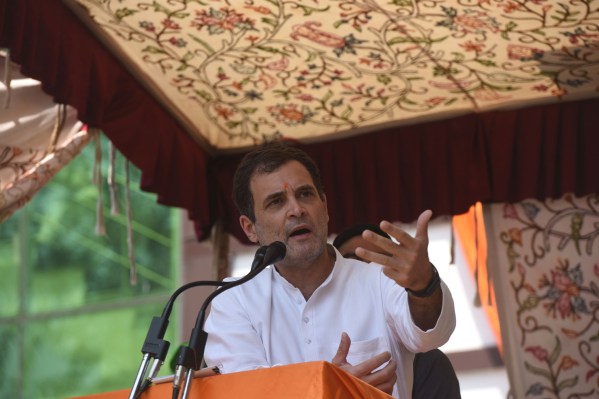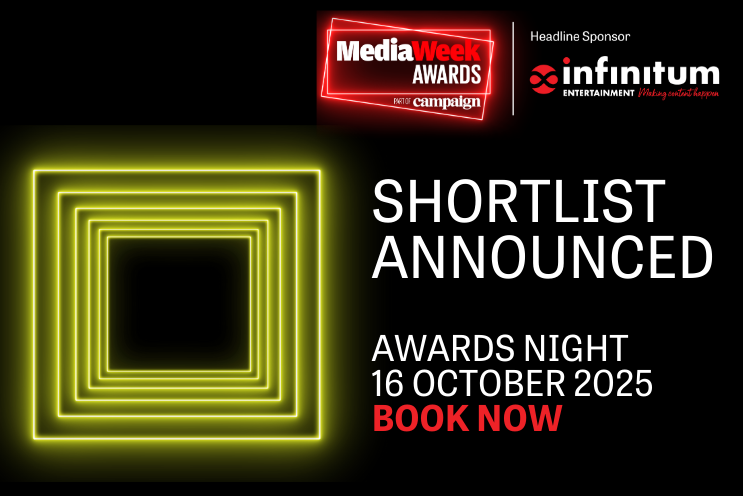Samsung’s Freestyle projector doesn’t live up to its $900 price
Samsung’s new portable projector isn’t what I hoped it would be Continue reading…

If you buy something from a Verge link, Vox Media may earn a commission. See our ethics statement.
The Freestyle could have been something really special. As Samsung’s first portable projector, it immediately stood out from all of the company’s other CES product announcements in January. What wasn’t to like? At under two pounds, the Freestyle was hyped as tiny in form but big on features and convenience.
The device is compact enough to be packed in a bag for travel or bringing on camping trips. It’d be a cinch to set up The Freestyle in the backyard for movie night, and the projector can run off some portable USB-C battery packs for added flexibility. Want an easy way to entertain your kids on vacation? Here you go. You can point the 180-degree tilting projector in a wide range of directions — including at the ceiling. And since it has the same software as Samsung’s smart TVs, it comes with a vast selection of entertainment apps in tow.
Samsung’s Freestyle includes autofocus and auto-keystone correction features to keep its image sharp and unskewed. There’s a powerful built-in speaker, smartphone mirroring capabilities (with support for Apple’s AirPlay 2), and a range of accessories like carrying cases and an adapter that lets The Freestyle plug into and receive power from a lightbulb socket. On paper, this device had the makings of an excellent first-generation gadget.
But that’s not what Samsung actually delivered.
What Samsung has shipped is a dim, flawed, and often sluggish projector that fails to realize its potential. For a company that’s been on a run of home theater hits with products like The Frame, this is an uncharacteristic misstep.
It’s not a cheap one, either: The Freestyle costs $899.99. That awkward price can be seen as another illustration of the projector’s challenges. It’s far more expensive than many portable pico projectors from smaller brands such as Anker and Xgimi but nowhere near as pricey as top-shelf home projectors. The Freestyle is caught in a no man’s land: if the asking price had been higher, maybe Samsung could’ve gone more ambitious on specs — especially brightness, which I’ll get to later. And if it were cheaper, I might’ve been more forgiving of its underwhelming performance.
:no_upscale()/cdn.vox-cdn.com/uploads/chorus_asset/file/23340382/DSCF7346.jpg) The Freestyle came scratched and scuffed out of the box.
The Freestyle came scratched and scuffed out of the box.
Upon opening The Freestyle, I noticed that the projector’s lid had come loose in the box and left quite a gash on the projector’s glossy, scratch-prone face. Not an ideal first impression, but these things happen. In the box, Samsung includes the floodlight-style projector, the optional lid (which effectively turns The Freestyle into an ultra-expensive smart lightbulb or mood light), a remote control with a rechargeable battery, plus a USB-C cable and wall charger.
:no_upscale()/cdn.vox-cdn.com/uploads/chorus_asset/file/23340387/DSCF7418.jpg)
The barrel-shaped hardware is exactly what you’d expect from Samsung and feels well made. I think The Freestyle has a good look to it, and it blends into rooms nicely. It also comes wrapped in a preinstalled, white silicone sleeve. Samsung sells other colors that you can swap between — this is a projector being marketed to Gen Z after all — and there’s also the $60 carrying case that inexplicably lacks anywhere to store the remote or wall plug. The silicone layer gives The Freestyle some added protection from scruffs if you toss it into a bag with other items, and I never saw any reason to remove it.
On the side of the projector, you’ll find a physical mute switch for the built-in voice mics — you can use either Samsung’s own Bixby or Amazon’s Alexa — a Micro HDMI input, and a USB-C port for power. Around back, The Freestyle has a lot of venting to keep it running cool and a socket adapter for compatibility with certain accessories like a battery base or the aforementioned lightbulb adapter. Despite not having a full-size HDMI port, the projector supports HDMI-CEC, and you can plug in a range of external devices, including PCs or gaming consoles, using adapters. (As with many projectors, there’s enough latency present to make The Freestyle a non-starter for competitive gaming.)
:no_upscale()/cdn.vox-cdn.com/uploads/chorus_asset/file/23340386/DSCF7412.jpg) The remote is perfectly adequate and has shortcuts for Netflix and other apps.
The remote is perfectly adequate and has shortcuts for Netflix and other apps.
On the front above the lens are capacitive buttons for power, volume, and another for linking The Freestyle with Samsung’s SmartThings mobile app on Android or iOS. To the left and right of the projection lens are a distance sensor and remote control sensor. The projector attaches to its base cradle with two large screws at the pivot point. And that design decision results in a frustrating hardware issue: when positioned at certain angles, The Freestyle has a habit of gradually drooping down and lowering the picture from where you originally set it.
I’m not sure whether it’s a case of the projector being too front-heavy or the plastic screws being too weak to keep it locked at all angles. You can tighten them with a flathead screwdriver or a coin to (mostly) alleviate this problem, but Samsung cautions against over-tightening, and I’ve seen a few mentions of cracked screws in some Freestyle customer reviews. This sagging issue isn’t a frequent hassle, but it’s very annoying when it happens and not at all what I’d expect from a $900 projector.
The Freestyle doesn’t have a battery, so you’ve got to keep it plugged in via the USB-C port at all times. Samsung says it will eventually sell a battery accessory that latches onto the projector for easier viewing on the go, and you can also power The Freestyle with any portable battery pack that’s capable of 50-watt power delivery. Of course, if you want to watch a movie while camping or in the backyard, you’ll have to come up with an internet solution — but my phone’s hotspot worked well for that. A secondary USB port would’ve been nice for local file playback since the USB-C jack is used for power at all times. You can connect a USB hub to the projector, but that’s a clumsy solution.
Setup is straightforward and can be done either with Samsung’s SmartThings mobile app (with the help of a QR code projected onto the wall) or step by step through the projector’s menus. The first time I set up The Freestyle, it was a tediously slow and laggy process. The remote would often register double presses after a single click, which made entering Wi-Fi and account credentials more annoying than necessary. Even after I was up and running, the software experience was dreadfully laggy. I’m talking a good seven or eight seconds just to pull up the settings menu.
:no_upscale()/cdn.vox-cdn.com/uploads/chorus_asset/file/23340392/glasstable.jpg) The Freestyle’s 180-degree cradle has a tendency to let the projector droop and sag.
The Freestyle’s 180-degree cradle has a tendency to let the projector droop and sag.
Samsung hasn’t specified what kind of underpowered processor is inside The Freestyle, but it’s not a great match for Tizen OS. This is the same UX you’ll find on the company’s recent TVs, but the responsiveness on this projector just isn’t there. During my time testing The Freestyle, Samsung has issued a couple software updates to cut down on lag. (This review is being published as of version 1095.) The updates have helped somewhat; now, the sluggishness is most noticeable when you first power on the projector. But once it’s had time to get into the flow of things, navigating around the home screen isn’t so dreadful anymore. And when you’re in third-party apps like Netflix or Hulu, everything is generally fine.
Outside of the performance issues, I don’t mind The Freestyle’s software. My main critique is that Samsung is pushing its free TV service a little too aggressively; you’ll constantly find yourself thrown into Samsung TV Plus unless you disable the “autorun last app” option in settings. I appreciate having free entertainment out of the box — what’s not to like about a 24/7 Bob Ross channel? — but it can feel a little in your face when it pops up while you’re just trying to fine-tune the projector’s settings.
:no_upscale()/cdn.vox-cdn.com/uploads/chorus_asset/file/23340383/DSCF7360.jpg) Samsung plans to sell a battery back that attaches to the bottom of The Freestyle.
Samsung plans to sell a battery back that attaches to the bottom of The Freestyle.
Depending on where you position The Freestyle, the projected image can vary from 30 inches diagonal (when 2.6 feet from the wall) up to 100 inches (at 8.7 feet from the wall or projection surface). The projector outputs a 1080p resolution with satisfactory contrast and color reproduction, though the outer edges can sometimes appear a bit soft.
And, my friends, brightness is not this thing’s strength.
Samsung advertises The Freestyle as being capable of hitting 550 lumens. However, that’s not using the ANSI lumens measurement that’s the norm when comparing projectors. Over on his YouTube channel The Hook Up, Rob Tait measured The Freestyle’s output at 240 ANSI lumens, which makes it practically unusable inside during the daytime. It looks fine at that smallest 30-inch picture size when right up close against the wall, but the whole point of buying a projector is to go bigger. Unfortunately, as soon as you do, the image becomes very faint.
:no_upscale()/cdn.vox-cdn.com/uploads/chorus_asset/file/23340389/DSCF7463.jpg) Even in this late afternoon light, The Freestyle struggled to produce a bright enough picture.
Even in this late afternoon light, The Freestyle struggled to produce a bright enough picture.
As you get into the afternoon and early evening, the situation improves a bit, and The Freestyle is at least competent. But the reality is that this projector works best in a dark room or, if you’re using it outside, well after sunset. The weak brightness output is a legitimate bummer for something that costs as much as a decent 4K TV.
:no_upscale()/cdn.vox-cdn.com/uploads/chorus_asset/file/23340385/DSCF7408.jpg) But in the dark, as with any projector, is its time to shine.
But in the dark, as with any projector, is its time to shine.
At the times when I was using The Freestyle in those ideal, dark circumstances, I was satisfied with the picture quality. I watched several episodes of The Dropout, a ton of Sling TV, and several hours of random Netflix selections. And even without 4K or intense HDR, it was an enjoyable viewing experience. Having the same app selection as Samsung’s smart TVs at your disposal is a nice convenience; Netflix isn’t available on many portable Android TV-based projectors, but it and all the other streaming heavyweights are accounted for on The Freestyle. The projector’s built-in speaker does an admirable job for being a single 5-watt driver and avoids sounding shrill, though I often had to crank the volume quite high into the 70s and 80s to get the most from it.
The Freestyle’s auto keystone and autofocus features didn’t impress me. Auto keystone was often way off the mark on walls and surfaces that should’ve been easy to handle. And autofocus was always close but not quite right and required manual adjustment to nail the best sharpness. Thankfully it’s fairly simple to use the manual options, but they’re somewhat buried in menus, and I wish Samsung put a shortcut to them somewhere.
:no_upscale()/cdn.vox-cdn.com/uploads/chorus_asset/file/23340388/DSCF7434.jpg) The Freestyle’s ambient mode can help out on special occasions.
The Freestyle’s ambient mode can help out on special occasions.
Aside from its everyday projector duties, I want to highlight a few novel ways I used The Freestyle that appealed to me and showcased its versatility:
I used it as a secondary monitor for my Mac.
Aside from making it easier to play content from an Apple device, The Freestyle’s built-in AirPlay 2 support allows it to act as a display for Macs. I’m currently on the hunt for a new external monitor, so having the flexibility to project a 30-inch image onto the wall next to my laptop was nice. I’d opt for a 4K given the choice, but if you’re working from a hotel room with The Freestyle nearby, it’s a handy trick. (You can also plug in PCs or Macs directly via the Micro HDMI port.)
I pointed it at my ceiling when I was isolating and recovering from COVID-19.
I managed to evade COVID-19 for two years despite living in New York City the entire time, but it finally came for me last week. Being able to point The Freestyle at my bedroom ceiling on nights when I had trouble sleeping thanks to a dire sore throat was a neat trick. The cradle makes this easy, but watching videos on the ceiling isn’t unique to The Freestyle; you can just reorient many other projectors to achieve the same result.
I paired better Bluetooth speakers for audio when watching outdoors.
You can pair Bluetooth speakers or headphones with The Freestyle if you’re not impressed by the built-in audio. And when I hooked it up in my backyard and watched a movie on the side of the building next door one night, I took advantage of that and linked it with a Sonos Move for beefier movie night sound. Again, Bluetooth support is by no means unique to Samsung’s projector, but it makes for impressive utility.
:no_upscale()/cdn.vox-cdn.com/uploads/chorus_asset/file/23340381/DSCF7325.jpg) It’s hard to reconcile The Freestyle’s first-gen flaws with its $900 price.
It’s hard to reconcile The Freestyle’s first-gen flaws with its $900 price.
I was less enthused by The Freestyle’s “ambient mode.” You can toss on the lid and turn it into a smart bulb or accent lighting, but I’m not sure why you’d want your $900 projector playing such an unglamorous role. There are also ambient screens and videos that you can project onto a wall — like a scenic window view or crackling fire — or others for specific occasions like a birthday or New Year’s Eve. But none of these are customizable; you can’t add someone’s name to the “Happy Birthday” banner, for example. They all come off feeling like random toss-ins that allow The Freestyle to have a place at depressing office parties or similar gatherings you’d rather avoid.
I really wanted to like this tiny projector. It’s not often that Samsung dives into a new product category, and a lot of the ideas behind The Freestyle are exciting. The company packed a ton of entertainment and functionality into this device. But it also made some questionable decisions along the way — like settling for mediocre brightness and saddling The Freestyle with an underpowered processor that gets bogged down juggling Samsung’s software. And then there’s the lack of an internal battery and the cradle that droops from time to time.
If this product cost $400 or less like many pico projectors, I could live with some of these flaws. Some people might be able to overlook them regardless and still be satisfied by what’s on offer. But Samsung wants $900 for The Freestyle, and there’s just too much about it that screams “first-generation product” for me to recommend to anyone for that kind of money — even if part of me is already looking forward to The Freestyle 2.
Photography by Chris Welch / The Verge

 JaneWalter
JaneWalter 































